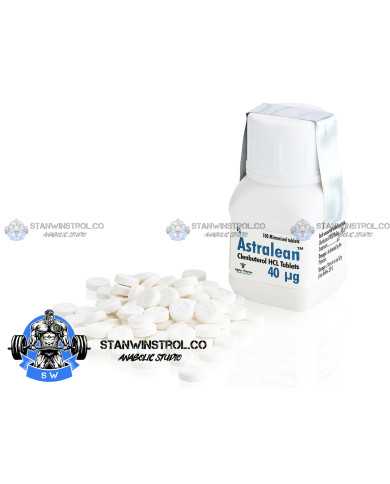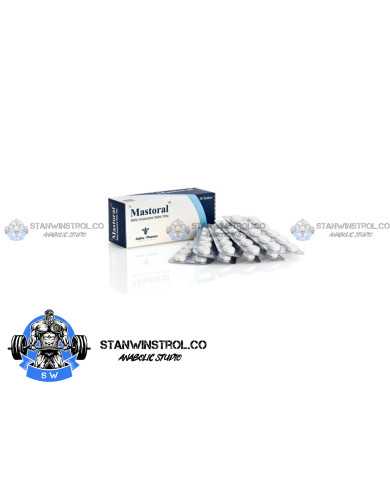Letrozole 2.5mg 50tabs
Overview and History of Letrozole
Letrozole (Femara) belongs to a category and class of drugs known as aromatase inhibitors (AIs). Aromatase inhibitors belong to an even broader class of drugs known as anti-estrogens. The other subcategory of drug under the anti-estrogens category is known as selective estrogen receptor modulators (SERMs), such as Nolvadex and Clomid. AIs and SERMs make up anti-estrogens. Aromatase inhibitors differ greatly from SERMs in their action and how they deal with the issues of estrogen control. The misunderstanding that SERMs, such as Nolvadex and Clomid, serve to lower estrogen levels must first be addressed before delving into any further details.
This is a persistent rumor among the anabolic steroid using community that has begun to erode as of late, but the rumor still persists. SERMs serve to block the action of Estrogen at the receptor sites in breast tissue by occupying the receptor sites in place of Estrogen so that Estrogen itself cannot exert its effects there through receptor site binding. Conversely, SERMs will also act as Estrogens at receptor sites at other cells in other areas of the body (the liver, for example in Nolvadex’s case). SERMs do not lower circulating levels of Estrogen in blood plasma. Aromatase inhibitors serve to do this by eliminating the production of Estrogen through binding to and disabling the aromatase enzyme, which is the enzyme responsible for the conversion (or aromatization) of androgens into Estrogen.
Letrozole is a non-steroidal and non-suicidal aromatase inhibitor, and belongs to the third generation line of aromatase inhibitors. Letrozole is very identical to Arimidex and is one of the three major aromatase inhibitors available (Arimidex, Aromasin, and Letrozole). The difference between Letrozole and the other two major aromatase inhibitors is the fact that although it is utilized for the treatment of post-menopausal female breast cancer patients, it is actually specifically utilized for what is known as Estrogen receptor unknown breast cancer. This is a breast cancer condition in which the diagnosis indicates that it is unknown as to whether or not Estrogen is the culprit, or whether or not the breast cancer is aggravated by Estrogen. As with all other aromatase inhibitors, Letrozole is normally utilized after first-line treatments (such as Nolvadex) has failed, but various conditions may require Letrozole to be used as a first-line treatment, though this is rare.
Letrozole was developed after Arimidex but before Aromasin, and it is the strongest and most potent of the three aromatase inhibitors by far. Novartis had manufactured the drug after it was approved for sale on the American prescription drug market in 1997, and was sold as the brand name Femara as well as a separate brand name Femar in certain other select countries across the world (mostly in a few countries in Europe). As with other aromatase inhibitors, it has become extremely widespread and common not only in North America, but also in international regions, countries, and markets where it is believed to be that well over 70 countries carry Letrozole, with the brand name Femara being the most popular and most widely used. In addition to the primary brand names, Letrozole can also be found as countless other generic brands.
Letrozole (Femara) has caught on naturally with anabolic steroid using athletes, bodybuilders, and invidiuals, as is common with all aromatase inhibitors. This is because of the Estrogen controlling and reducing capability of Letrozole, which is favored in anabolic steroid users that are engaging in the use of aromatizable anabolic steroids (such as Testosterone, Dianabol, Equipoise, etc.) and that it can be effectively utilized to control issues resultant of excess Estrogen (bloating, blood pressure, gynecomastia, etc.).
Chemical Characteristics of Letrozole
Letrozole (Femara) is a non-steroidal aromatase inhibitor. This is to say that it does not possess the characteristic four ring cycloalkane ring carbon structure common of all types of steroids, unlike the steroidal aromatase inhibitor Aromasin (Exemestane).
Properties of Letrozole
Letrozole’s effects on serum Estrogen level control are perhaps the strongest and most effective of the three major aromatase inhibitors as noted in studies. Even the informational pamphlets included with the pharmaceutical product have stated that at its standard tablet dose of 2.5mg is effective enough to reduce circulating Estrogen levels by an average of 78%. However, actual real clinical data has demonstrated far more effective reductions (remember that 78% is a determined average). Letrozole in studies has exhibited at least 98% reduction or more of serum Estrogen levels. Letrozole can be so effective at inhibiting the aromatase enzyme and thereby reducing Estrogen levels that this compound is typically only administered to post-menopausal females, and/or utilized when other first-line treatments for breast cancer has failed. This is actually a common usage aspect of all three major aromatase inhibitors, as they are all very effective compounds for the purpose of Estrogen reduction, with Letrozole by far being the most effective.
Arimidex and Letrozole are both classified as non-steroidal and non-suicidal aromatase inhibitors that compete with the substrate for binding to the enzyme active site. This is very different from Aromasin (Exemestane), which is a steroidal and suicidal aromatase inhibitor that acts as a mechanism-based steroidal inhibitor that mimics the substrate, is converted by the enzyme to a reactive intermediate, and results in the inactivation of the aromatase enzyme. For ease of understanding, what this means to the layman is that Aromasin’s chemical structure resembles the traditional ‘targets’ that aromatase binds to (Testosterone, for example) and that it essentially ‘fools’ the aromatase enzyme into binding with it, only to become inhibited/deactivated. Because the binding strength is so great, this inhibition becomes permanent for the aromatase enzyme that Aromasin has become bound to. Arimidex and Letrozole, being non-suicidal aromatase inhibitors, both compete with the enzyme’s traditional ‘targets’ rather than being assured a permanent spot (which is the advantage that Aromasin has over the other two).
Letrozole, as is common with all aromatase inhibitors has also demonstrated the ability to increase the endogenous production of LH (Luteinizing Hormone), FSH (Follicle Stimulating Hormone), and consequently, Testosterone levels in men, but this will be further covered in greater detail under the Letrozole doses section of the profile.
Bodybuilders and athletes utilizing anabolic steroids will usually favor aromatase inhibitors such as Letrozole for its ability to eliminate risingEstrogen levels at its root cause: aromatase. By disabling the aromatase enzyme, supraphysiological levels of aromatizable androgens (such as Testosterone, Dianabol, Deca-Durabolin, etc.) cannot convert into Estrogen, thereby eliminating any possible risk of Estrogen-related side effects.
Letrozole (AKA Femara)
Chemical Name: 4,4′-((1H-1,2,4-triazol-1-yl)methylene)dibenzonitrile
Molecular Weight: 285.303 g/mol
Formula: C17H11N5
Original Manufacturer: Novartis
Half Life: 2 – 4 days
Detection Time: 2 weeks
Anabolic Rating: N/A
Androgenic Rating: N/A

115
Reviews
No customer reviews for the moment.

















